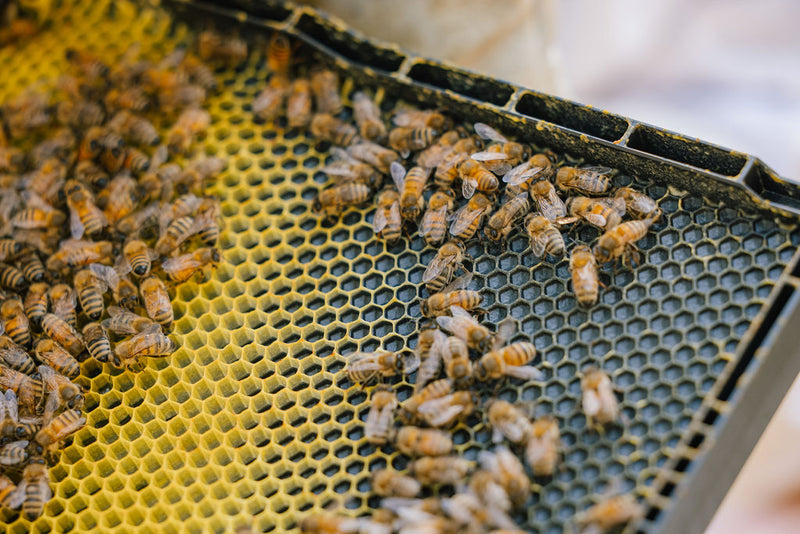
How Beeswax is Made
One of the main components of a beehive consist of an incredible substance called beeswax. Beeswax is produced by 4 pairs of glands located on the abdomen of a worker bee. These glands produce wax in the form of tiny ‘scales.’ These tiny ‘scales’ secreted by glands in the abdomen are then scrapped off by the legs of a worker bee and into their mouths. The saliva from their mouths soften the wax, making it easier to mould into shape. The wax picks up debris such as pollen, honey, propolis and ‘bee bits’ which eventually darkens the beeswax’s colour. This incredible substance is energetically quite expensive to produce which means that the honeybee must be well fed in order to create beeswax. This is why we typically find increased wax production during the summer when there is a nectar flow (an abundance of food). Some say a worker bee needs to consume approximately 8 ounces of honey to produce 1 ounce of wax- quite the feat!
Beeswax is Essential to Every Beehive
Although what is the purpose of beeswax? Beeswax makes up the interior walls and rooms of the beehive. The iconic hexagonal shape creates pockets lining the walls in which the colony fills with capped honey, nectar, pollen and larva. These ‘hexagonal cells’ are essential for the growth of a colony. Without beeswax, there would be nowhere to store food nor a place for larval development.
Why Do Bees Make Hexagons
Hexagons, unlike say circles, line up perfectly with one another—there are no gaps of unusable spaces. It is incredibly efficient. Not only is it efficient in terms of using every ounce of space for resources, but it is efficient in terms of material use. Since each wall of the hexagon is shared with an adjoining hexagon, less material is needed to be generated in order to complete and entire wall of ‘storage.’ And since wax production is quite labour-intensive and resource heavy, it is arguably the perfect shape. In addition, this network of hexagons is structurally quite strong which is important to withstand not only food, larva but also the thousands of honeybees.
Interested in learning more about beekeeping? Check out Beekeeping 101. This online, self-paced course will help you learn everything you need to know about managing and growing your very own colony.
Happy Beekeeping!
